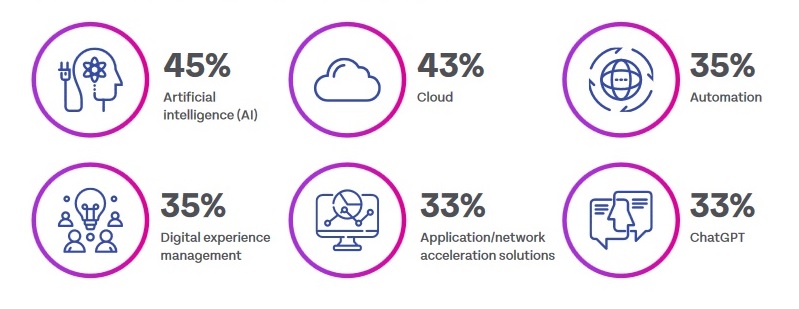
As Gen Z and Millennials become a larger part of the workforce, expectations for the Digital Employee Experience (DEX) have never been higher, according to Riverbed's Global Digital Employee Experience Survey of 1,800 IT business decision makers worldwide.
The rising influence of these digital natives, the shift to hybrid work, and limited resources have put tremendous pressure on IT teams to deliver exceptional DEX — or risk losing talent and productivity. Because of the need to attract and retain top-level Gen Z and millennial talent, some HR teams are calling CIOs and their IT teams the new Chief Talent Officers.
Millennials and Gen Z have the highest technology and digital experience expectations in the workforce, with 91% of IT leaders stating that they must provide more advanced digital experiences to meet the digital natives' needs to keep them engaged and productive at work. Respondents (89%) also believe that younger generation employees place increased pressure on dwindling IT resources, including smaller staffs.
Other key findings from the survey include:
■ 95% of business and IT leaders surveyed said delivering a seamless DEX is important to remain competitive.
■ 68% said younger employees may leave the company if digital needs aren't met.
■ 95% can identify at least one major obstacle to delivering a seamless DEX.
■ 94% said Unified Observability is important to competitiveness and DEX.
Survey respondents also believe that delivering better digital experiences is getting harder – not easier. They identified several obstacles in their path, including budget constraints (36%), IT talent/skills shortages (35%), lack of sufficient observability tools (29%), too much data to manage (28%), and a lack of appropriate SaaS or cloud services (29%). To counter these challenges, 81% of IT leaders polled have set aside budget to retrain their staffs, with 86% believing that the use of Unified Observability technology with greater automation and AI support can help close the skills gaps.
Unified Observability Is Key to Exceptional DEX
The move to hybrid/remote work, rapid cloud deployments and the need to keep digital native workers engaged on the job has resulted in IT leaders taking on bigger roles across their organizations. Technology is now a strategic driver of business growth as well as a recruiting tool to keep newly arriving younger workers as engaged and productive as possible at work. Given these trends, 89% of survey respondents plan to accelerate digital experience adoption and implementation, with 91% stating that they must make greater investments in Unified Observability solutions.
Unified Observability enables organizations to effectively monitor and analyze their entire digital infrastructure, including networks, apps, and user experiences. This holistic view allows them to proactively identify and address issues or bottlenecks that may impact performance, productivity, and employee or customer satisfaction. With real-time insights into their digital ecosystem, organizations can make informed decisions, optimize operations, and deliver a seamless digital experience for both employees and customers.
In addition to Unified Observability, survey respondents will also rely heavily on a mix of new and familiar technologies to shape the future workplace and improve DEX. These technologies identified below are expected to play a larger role in enhancing business operations, employee productivity and overall digital experiences over the next 18 months:

In late 2023 and throughout 2024, we will see IT leaders make deeper investments in DEX and in solutions such as Unified Observability and AI, particularly as the hybrid/remote work trend continues to flourish. By placing greater emphasis on these areas, they will empower their teams to dramatically improve their digital workplaces while helping their organizations attract and retain top young talent, outperform competitors, and drive sustainable long-term growth. By prioritizing the IT initiatives and investments that heighten DEX, IT teams can create a more productive work environment that, in turn, leads to higher employee engagement, greater customer satisfaction and overall business success.
